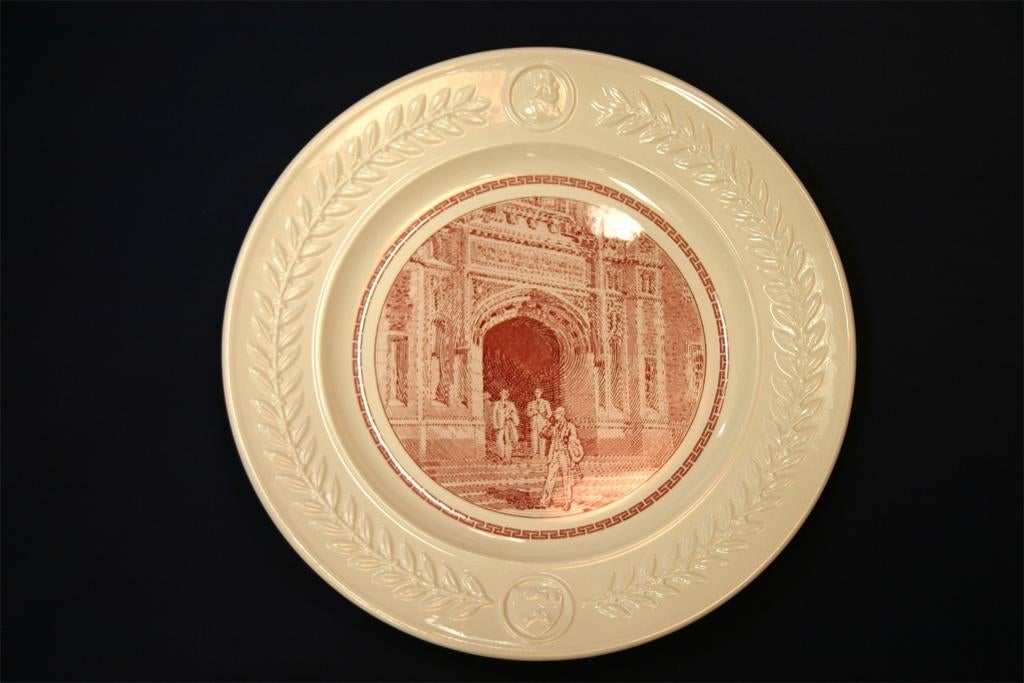Artist: Douglas Dobell Ellington (1886-1960)
Douglas Dobell Ellington drew the sketch of the portal to the Evans Institute which appears on this University of Pennsylvania Bicentennial Wedgwood China plate. A native of North Carolina, Ellington attended Randolph Macon College before coming to Philadelphia to study at both the Drexel Insitute and the University of Pennsylvania. He earned the degree of Bachelor of Science in Architecture (B.S. in Arch.) from Penn with the Class of 1912.Ellington was awarded the Paris Prize in 1912, and while in Paris became the first American to win the Prix Rougevin at the Ecole de Beaux Arts. Ellington later taught architecture at the Drexel Institute, the Carnegie Institute of Technology (now Carnegie Mellon University), and Columbia University. He returned to North Carolina to set up a practice in the 1920s, and later moved to Charleston, South Carolina. Aside from architecture, Ellington was also an author and artist whose watercolors have been displayed at numerous galleries.
Subject: Evans Institute

Architect: John Torrey Windrim (1866-1934) and Cope and Stewardson


